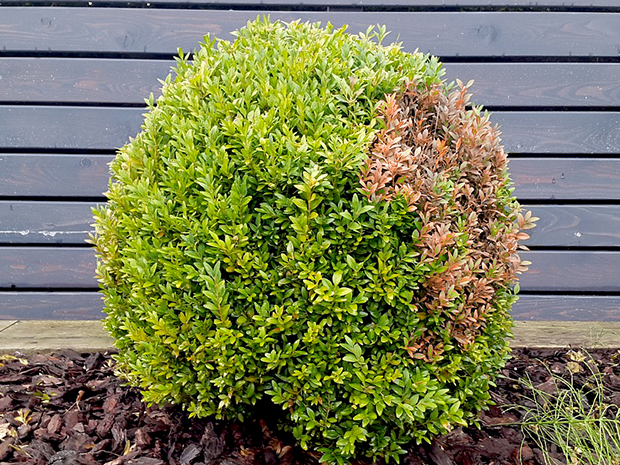Winter burn Rust colored needles where those nice green ones used to be. It’s really all about moisture. Cold winds or salt can dry out needles and leaves, and when the winter is particularly cold, this happens faster than the plant can replace water through its roots.
Trees continue to use water in dormancy, so younger trees with more roots in the frost zone of the soil are more at risk. If you didn’t use an anti-desiccant and/or burlap before winter then here’s what you need to do to help your tree or shrub now.
Wait Yes, wait until the end of spring to see how much of the plant pushed out new growth. Buds aren’t always damaged when needles obviously are, so you don’t want to cut off those buds that will flush out with new growth!
Water and Mulch Water your plant as if it’s a new planting. Deep soaking (after the ground thaws) with a soaker hose for a full day once a week should be good. Put some mulch around the plant, but not touching the trunk. This will help keep the moisture in for the roots to use.
Feed Using a slow release granular such as Plant-tone or Holly-tone.
After new growth Prune back as much of the damage as you can without causing too much deformity and without taking back more than 1/3 of the plant overall. If more than half of the plant is damaged, you may still lose the plant. Options now are to re-plant in a more protected spot or with the plan to give winter protection next year, or you can replace with a very hardy and reliable specimen taking into consideration winter temps in your area. If your plant survives, keep watering right up until the ground freezes next year.
Don’t overwater! Drowning the plant won’t reverse the damage!

